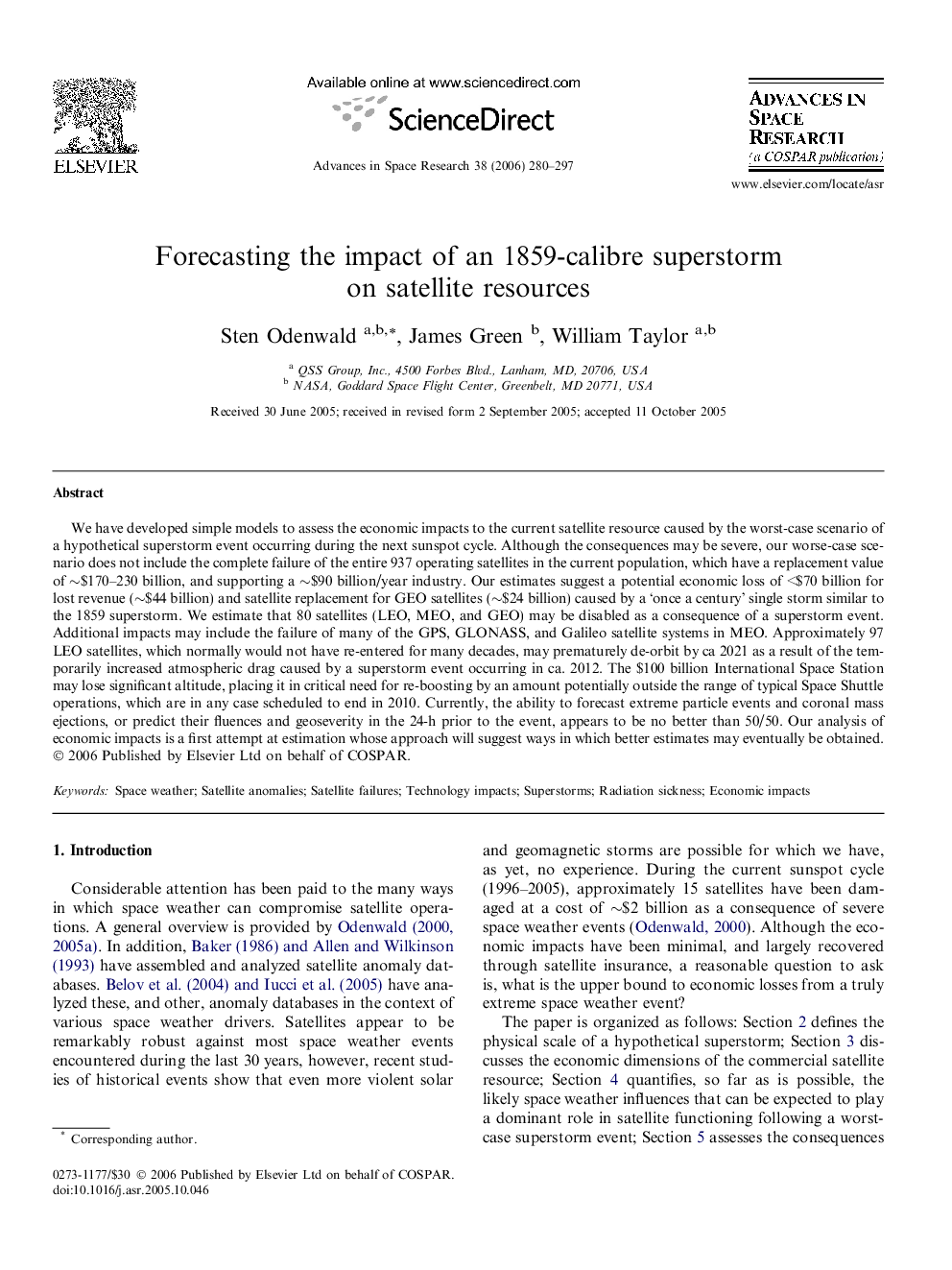| Article ID | Journal | Published Year | Pages | File Type |
|---|---|---|---|---|
| 1767111 | Advances in Space Research | 2006 | 18 Pages |
We have developed simple models to assess the economic impacts to the current satellite resource caused by the worst-case scenario of a hypothetical superstorm event occurring during the next sunspot cycle. Although the consequences may be severe, our worse-case scenario does not include the complete failure of the entire 937 operating satellites in the current population, which have a replacement value of ∼$170–230 billion, and supporting a ∼$90 billion/year industry. Our estimates suggest a potential economic loss of <$70 billion for lost revenue (∼$44 billion) and satellite replacement for GEO satellites (∼$24 billion) caused by a ‘once a century’ single storm similar to the 1859 superstorm. We estimate that 80 satellites (LEO, MEO, and GEO) may be disabled as a consequence of a superstorm event. Additional impacts may include the failure of many of the GPS, GLONASS, and Galileo satellite systems in MEO. Approximately 97 LEO satellites, which normally would not have re-entered for many decades, may prematurely de-orbit by ca 2021 as a result of the temporarily increased atmospheric drag caused by a superstorm event occurring in ca. 2012. The $100 billion International Space Station may lose significant altitude, placing it in critical need for re-boosting by an amount potentially outside the range of typical Space Shuttle operations, which are in any case scheduled to end in 2010. Currently, the ability to forecast extreme particle events and coronal mass ejections, or predict their fluences and geoseverity in the 24-h prior to the event, appears to be no better than 50/50. Our analysis of economic impacts is a first attempt at estimation whose approach will suggest ways in which better estimates may eventually be obtained.
